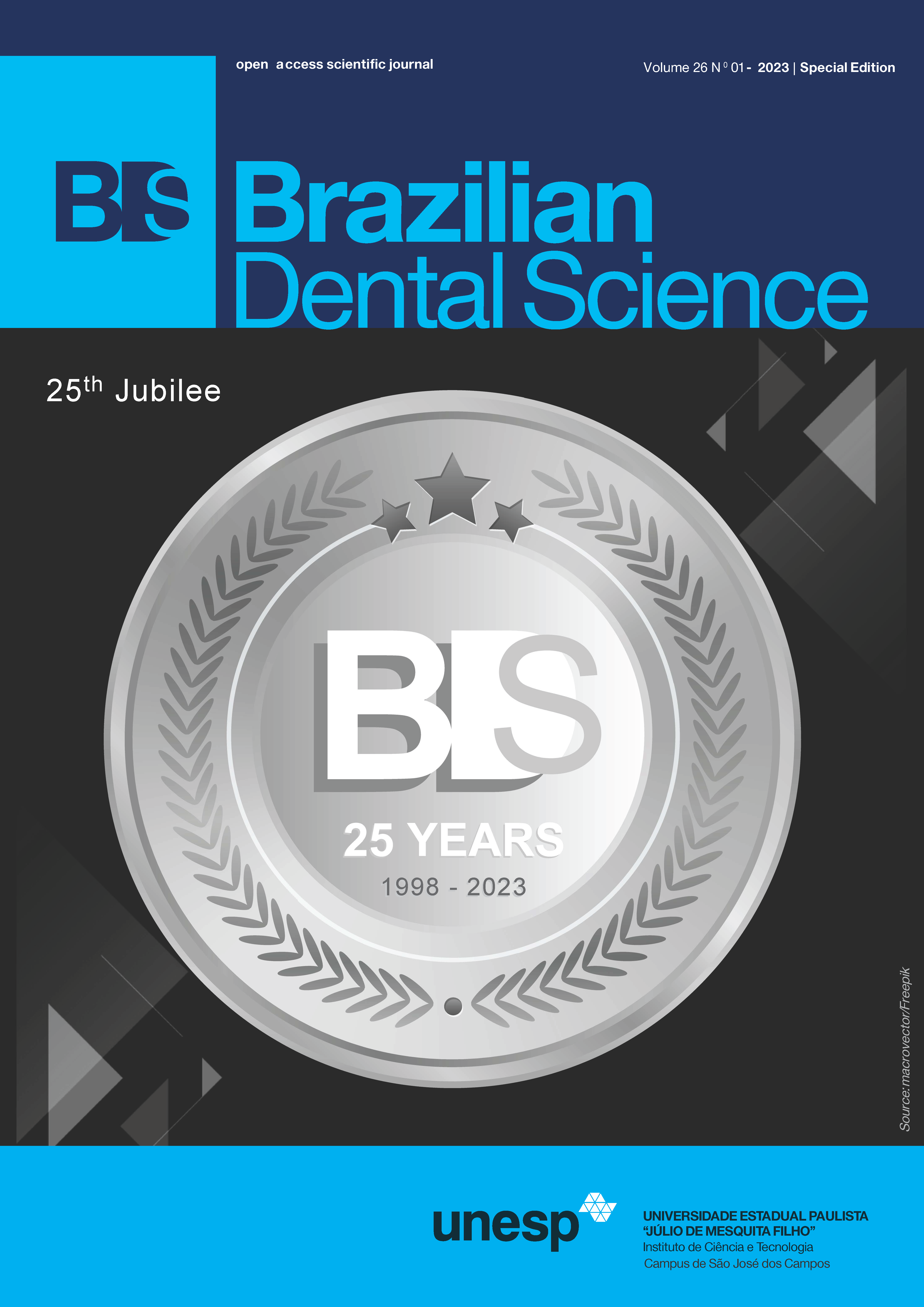Stress distribution in lower second molar mesialization using miniimplants: a pilot study using 3D finite element analysis
DOI:
https://doi.org/10.4322/bds.2023.e3485Resumo
Objective: to analyze the stress distribution in a 3D model that simulates second molar mesialization using two
different types of mini-implants. Material and Methods: a mandible bone model was obtained by recomposing
a computed tomography performed by a software program. The cortical and trabecular bone, a lower second
molar, periodontal ligament, orthodontic tube, resin cement and the mini-implants were designed and modeled
using the Rhinoceros 4.0 software program. The characteristics of self-drilling orthodontic mini-implants were:
one with 7 mm length, 1 mm transmucosal neck section and 1.6 mm diameter and another with 5 mm length
and 1.5 mm diameter. A total of 235.161 and 224.505 elements were used for the mesh. These models were
inserted into the bone block and then subjected to loads of 200 cN (centinewton). The results were calculated
and analyzed by the Ansys 17.0 software program for qualitative verification through displacement and maximum
principal stress maps. Results: it was possible to observe that the periodontal ligament presented low displacement
and stress values. However, the physiological values presented are among those capable to provide orthodontic
movement, with compression and tensile area visualization staggered between 0.1 and -0.1 MPa (megapascal).
Conclusion: within the limitations of the study, the mini-implants tested showed similar results where the
load on the tooth allowed dental displacement (molar mesialization), with a tendency to rotate it, theoretically
allowing the second molar to take the location of the first molar.
KEYWORDS
Finite element analysis; Orthodontic anchorage procedures; Fixed orthodontic appliances; Mini dental implants;
Tooth dislocation.
Downloads
Downloads
Publicado
Como Citar
Edição
Seção
Licença
TRANSFERÊNCIA DE DIREITOS AUTORAIS E DECLARAÇÃO DE RESPONSABILIDADE
Toda a propriedade de direitos autorais do artigo "____________________________________________________________________" é transferido do autor(es) para a CIÊNCIA ODONTOLÓGICA BRASILEIRA, no caso do trabalho ser publicado. O artigo não foi publicado em outro lugar e não foi submetido simultaneamente para publicação em outra revista.
Vimos por meio deste, atestar que trabalho é original e não apresenta dados manipulados, fraude ou plágio. Fizemos contribuição científica significativa para o estudo e estamos cientes dos dados apresentados e de acordo com a versão final do artigo. Assumimos total responsabilidade pelos aspectos éticos do estudo.
Este texto deve ser impresso e assinado por todos os autores. A versão digitalizada deverá ser apresentada como arquivo suplementar durante o processo de submissão.




























